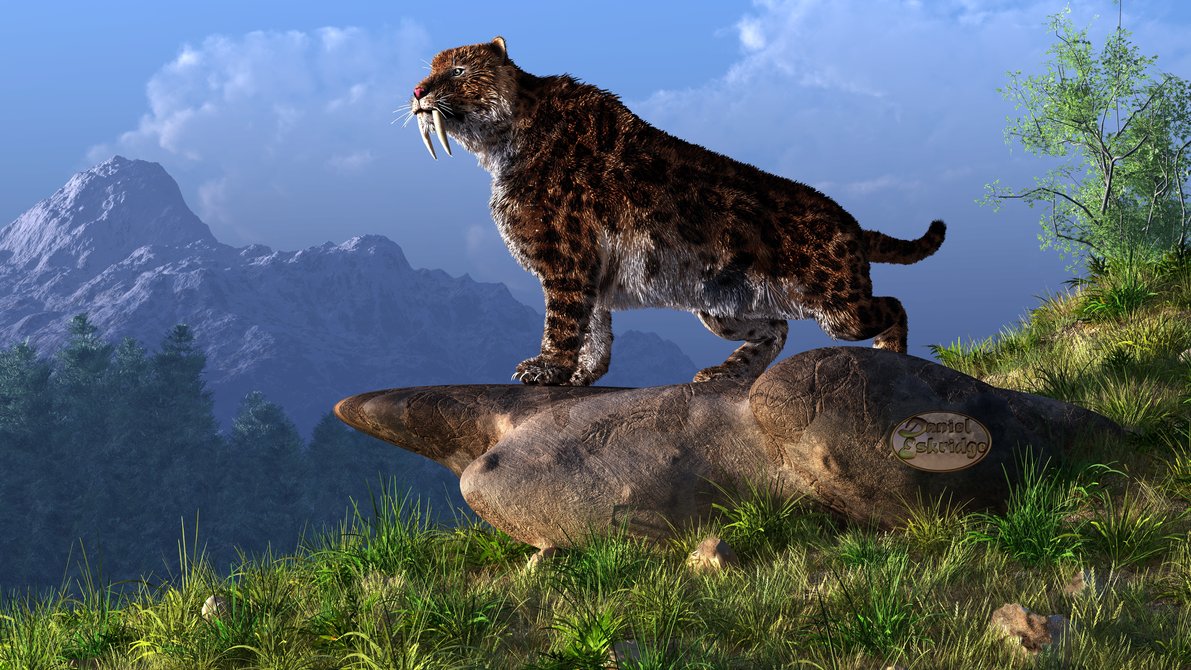Facts
- Most of the fossils found show Smilodon fatalis to
have short rear legs and strong front legs. This would
indicate that they were most likely good jumpers and liked
to surprise their prey (Schmieder 2000).
- The three main species of Smilodon are Smilodon
gracilis, Smilodon populator, and Smilodon fatalis.
Smilodon
gracilis was the oldest and smallest of the three, Smilodon
populator was the largest of the three and resembled a
modern day lion, and Smilodon fatalis was the most recent
and seemed to be confined to the Americas (Turner 1997).
- Scientists inferred that as a way to exert their presence in the habitat,
Smilodon would spray urine or leave claw marks on trees.
This was a way to ward off intruders from entering their
domain. This behavior is prominent in all cats (Turner
1997).
- There are fossils that showed signs of wounds in the
shoulder and spine area. Scientists believe this may be a
sign of fighting amongst Smilodon (Turner 1997).
- Smilodon had relatively longer necks compared to other
cats. This adaption was to help them reach vital areas of a
prey more easily during a hunt (Turner 1997).
- There is a common misconception associated with the name
"saber-tooth tiger." Smilodon are denoted as cats;
however, they are not closely related to tigers (Turner
1997)
- Smilodon is both singular and plural.
To continue on the journey, visit
References next!
To return to the Smilodon fatalis homepage , click
here.
